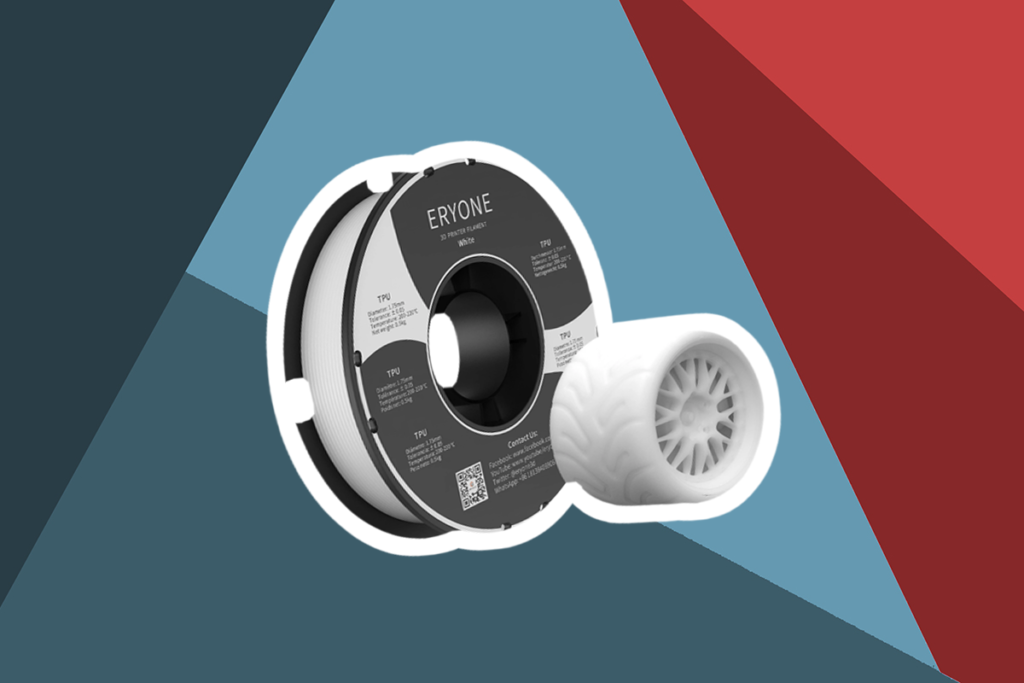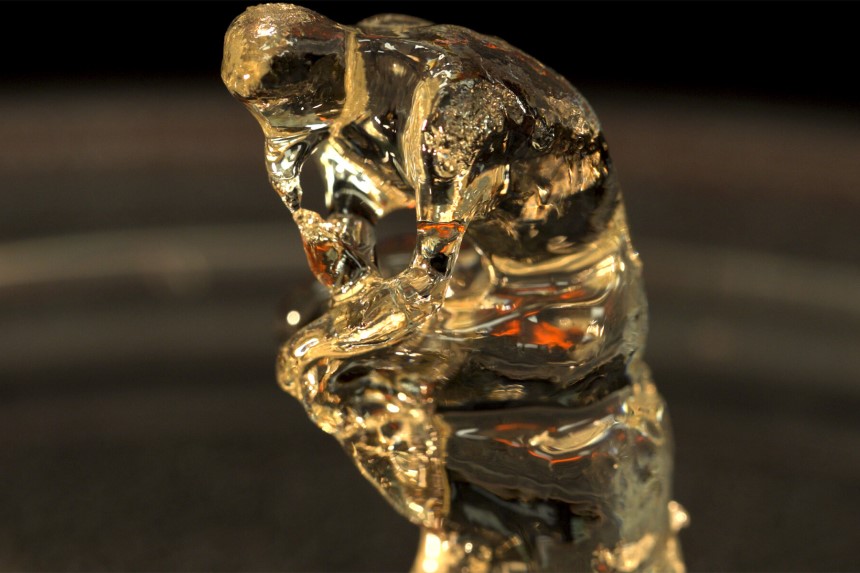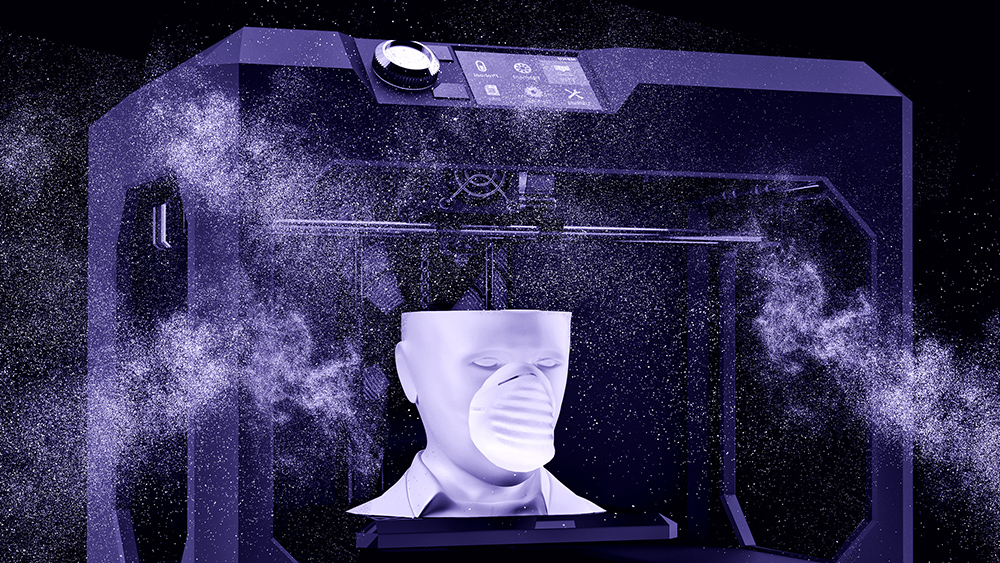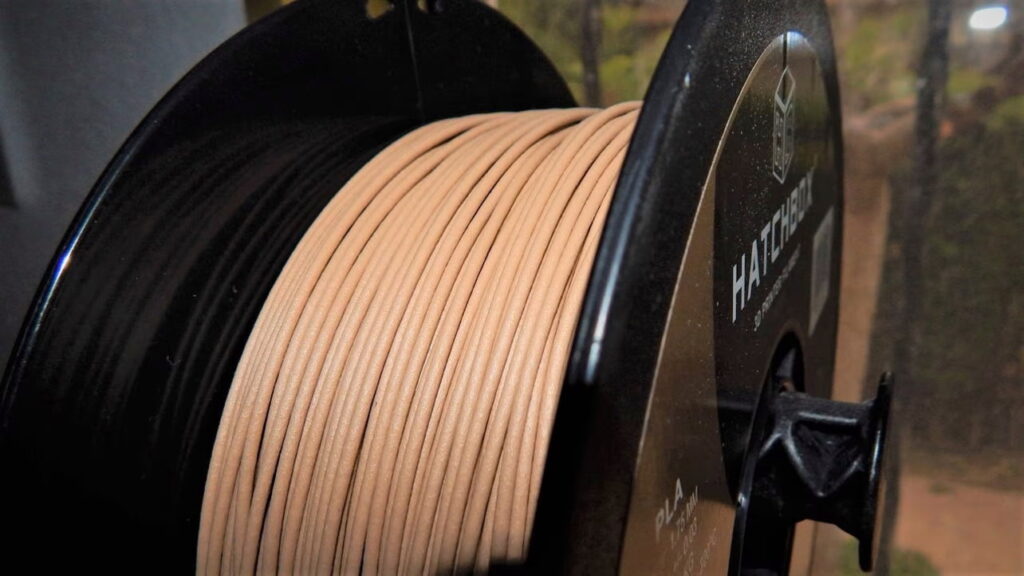

If you thought that you could use all the types of filaments outdoors and that they would be able to handle exposure to any weather element equally, rest assured you’re wrong. 3D printers are becoming more affordable and increasingly common in the construction industry, where architects and engineers can design objects and even whole houses Trusted Source The world's first family to live in a 3D-printed home A family in France has become the first in the world to move into a 3D-printed house. The four-bedroom property is a prototype for bigger projects aiming to make housebuilding quicker and cheaper. Could it cause a shift in the building industry? With curved walls designed to reduce the effects of humidity and digital controls for disabled people, this house could be an expensive realisation of an architect’s vision. www.bbc.com . While they are becoming cheap and famous, there are still limitations regarding the material used and handling different environments.
When printing models for outside utilization, you need the best 3D filament for outdoor use that can function normally under various humidity levels and lack of climate change for your builds to last longer. We examined different types of 3D printing filaments and selected six that performed the best outdoor functions. Hence, we considered factors such as UV resistance, heat resistance, ease of printing, and hygroscopic features in our selection.
More features: different colors available
ANYCUBIC PETG 3D Printer Filament is arguably one of the best PETG outdoors filaments. It is also one of the most popular brands among DIYers because it has an easy setup process and comes with everything needed to start using it right away. At a reasonable price, this filament will give you excellent outdoor performance. Its UV resistivity and tensile strength ensure that anything you build out of it lasts long, even when kept under direct sunlight for long.
This filament is best suited for environmentalists and families with children. It is odorless and non-toxic, making it safe for any child to use. The filament is also biodegradable and environmentally friendly, unlike its ABS and ASA counterparts. We also found out that the ANYCUBIC PETG type is best suited for people who would like to print much more quickly. Poly Ethylene-Glycol (PETG) material uses a lower temperature to print than other filaments and does not require a heated bed.
More features: dimensional stability for warp-free printing, layer adhesion, easy support removal
Another PRILINE Carbon Fiber Polycarbonate is yet another best filament for outdoor use. The fiber offers exciting properties such as high chemical sensitivity, temperature tolerance, high strength, and stiffness. The perfect printing temperatures for this fiber range between 240 to 260 degrees Celsius for your nozzle and 90 to 100 degrees Celsius for the base plate.
The PRILINE Carbon Fiber Polycarbonate filament is best for building work pieces that need to be incredibly strong and lightweight. Its unique carbon fibers make it ideal for creating objects that require extreme toughness without compromising on weight. If you are looking for something durable but still lightweight, this filament is what you should choose.
More features: many color options are available
Hatchbox PETG filament is arguably the best 3D filament for outdoor use available on the market today. Its unique blend of materials gives it superior strength and durability. Hatchbox PETG filament comes in 20 different colors and is suitable for both indoor and outdoor use. With its outstanding performance, Hatchbox PETG filament will give you excellent results every time.
The Hatchbox PETG filament is best for you if you need a chemically stable print that can resist wear and tear in any solvent. Its chemical resistivity is a result of Glycerol. The element is a resonant ring structure that rarely reacts with acids, bases, or other solvents. Products made using this material are incredibly strong and durable, making it the number one choice for prosthetic devices. This material makes products that can also be used outdoor as it also resists degradation caused by UV rays and radiation.
More features: different colors available, high precision, raw materials, high strength
If you are looking for an affordable yet reliable filament for your printer, then look no further. Anycubic ABS 3D Printer filament is one of the most popular filaments available today. With its excellent mechanical properties, low cost, and ease of availability, ABS 3D Printing is becoming increasingly popular among hobbyists worldwide.
Anycubic ABS 3D printer filament differs from its PETG counterpart in that the two use different materials. The former uses Acrylonitrile Butadiene Styrene while the latter Polyethylene Tetra-phthalate Glycol. One of the most significant performance differences between the two fibers is that ABS does not like to stick to itself and the print surface. This characteristic necessitates the use of heated build beds. When it comes to storage and hygroscope, ABS is the champion. It is easy to store and does not absorb moisture from its surroundings.
More features: weather-resistant, high heat resistance, matte finish
The Polymaker ASA filament works great outdoor due to its high UV, impact, and temperature resistance. This model is specifically designed for outdoor use, comes in 20 different colors, and a risk-free lifetime technical support. If, by any chance, the fiber isn’t performing as it should, you are guaranteed to get a refund.
Polymaker filament is made of Acrylic Styrene Acrylonitrile, a plastic that has similar properties as ABS. Initially, scientists built this material to be an alternative to ABS. It is more UV rays resistant, resists high temperatures effectively, and performs well in harsh environments compared to ABS. Since his plastic was a heritage of ABS, we found out that it still retains most of the drawbacks seen with ABS in our previous tests.
More features: matte, rubber-like flexibility
The last best 3D printer filament for outdoor use on our list is the PiderMaker SpiderFlex TPE. You can use this filament for several 3D applications, including phone sleeves, rubber tires, watch straps, gaskets, and other outdoor items. SpiderMaker SpiderFlex utilizes an elastic material known as Thermoplastic Elastomer (TPE), which gives it rubber-like textures.
Spiderflex TPE is an ideal material for creating flexible products such as RC car tires, toys, phone cases, and so forth. The filament is also resistant to abrasion and always retains its flexibility even under low temperatures. Therefore, you can use it to make valuable materials that you will use in extreme conditions, such as automobile parts, sports goods, medical devices, and other outdoor equipment.
To choose the suitable 3D filaments for your next project, you should consider several factors. Based on these dynamics, you can easily select the best printing material for you. We have compiled all these criteria below and some additional information to help you find that perfect filament for your needs.
The best 3D filaments for outdoor use are UV rays and radiation-resistant. The materials can stand even the most extreme radiations from the sun without deforming, discoloring, or changing their shape. Outdoor filaments also need to be robust and resistant to friction, abrasion, and chemically stable.
When choosing the best 3D filaments for outdoor use, you must first understand what kind of application or projects you want to print. There are different types of 3D filaments available today, each suitable for specific purposes. Here are some of the essential factors you should consider.
Filaments consist of different materials. The material used to make your fiber determines its property and whether it is fit for outdoor use. For example, PLA plastic has excellent mechanical strength, while ABS plastic is more durable than PLA. On the other hand, PETG is very strong and resilient. TPE is flexible and resistant to abrasion and friction.
ABS boasts superior toughness, chemical stability, and impact resistance. Another material, such as Carbon fiber, is strong yet light.
If your item should be as strong as possible, we recommend purchasing the PRILINE Carbon Fiber reviewed in this article. If you need to build an impact-resistant and tough product, then the ANYCUBIC ABS 3D Printer Filament above is best suited for you. For a project with abrasion and friction resistance properties, you would be better off using the SpiderMaker SpiderFlex TPE Filament covered in this write-up.
The weight of any object plays an essential role in how well it performs. A lightweight filament is best suited for constructing parts of a moving object. For instance, if you are building toys or RC cars, you would want them to be highly lightweight to maneuver with less force. On the other hand, dense material is vital for stationery products or those that need to be stable enough. For example, if you are printing building blocks, you would want them to be heavy to make sturdy structures that are not prone to windy weather.
For a lightweight yet strong product, we recommend using the PRILINE Carbon Fiber we have listed above. The filament consists of carbon which is light and five times robust than steel. For a dense build, we recommend purchasing the ANYCUBIC ABS 3D Printer Filament covered above.
If you want to build a product that is resistant to bending, then you should choose a filament with higher diameter. With such a diameter, your prints will have a bigger layer width and hence not be susceptible to bending. On the other hand, if you want to build a flexible item that can curve easily, you are better off choosing a filament with a thin diameter.
For instance, if you were making a watch strap, you would need to use a material with a smaller diameter. On the other hand, if you were printing something else like a supporting exoskeleton, you would need to use a thick diameter.
For this, we suggest using the Polymaker ASA Filament because it comes in two sizes – 1.75 mm or 2.85 mm. You can use any of the two different models in your prints according to your bending resistivity needs. If you are looking for a material that is flexible and can bend easily, then we recommend using the SpiderMaker SpiderFlex TPE covered above.
Tolerances play an essential part when building objects. It determines how much your filament will deviate from a particular value. Each filament has a different tolerance level in which your printer may slightly vary from the set dimensions. In most materials, tolerances range from 0.01mm to 0.05mm. You should know that every millimeter matters. It’s therefore advisable to get the possible minor tolerance so that no gaps appear between surfaces.
The best printer filament with the least tolerance on our list is the ANYCUBIC PETG 3D Printer Filament. The material has a lenience of ±0.02 mm, which is less than the others on the market.
Each filament has different minimum and maximum temperature requirements. Each material is composed of various elements and chemicals, hence the difference. Overall, filaments that require lower temperatures are the best. They are easy to print, do not warp easily or shrink at a fast rate. They are also very adhesive to the printing bed and, therefore, easy to use.
The best material with a low recommended temperature is the ANYCUBIC PETG 3D Printer Filament reviewed above. It only needs temperatures of between 230 and 250 degrees Celsius. The fiber doesn’t even need a heated bed to print optimally.
When determining whether a specific filament is suitable for your model, you must also consider its printing speed. Some printers cannot handle faster speeds, while some work perfectly fine with them. Therefore, before purchasing a filament, check out what kind of speed your machine supports and whether it is compatible with it.
In general, slower speeds are more accurate, but they take longer to complete.
Fast speeds allow you to make multiple layers quickly. However, these layers tend to overlap each other resulting in poor quality. Fast speeds might also result in warping. We recommend using fast speeds only when you are printing a prototype. If you are building the actual product, stick to a medium or low rate of printing.
We recommend using the ANYCUBIC ABS 3D Printing Material reviewed herein since it offers high and low speeds at a great price. If you don’t mind the printing speed, you can opt for SpiderMaker SpiderFlex TPE material which prints flexible and abrasion-resistant products at a chameleon pace. You should only purchase it if your printer supports slow speeds.
Filaments have their own weather resistance ratings. These indicate how long the object printed by a specific filament lasts outdoors without getting damaged. When choosing the best filament for you, consider the type of environment you will be using it. Will it be humid, sunny, or rainy? All this information helps determine the ideal filament for your project.
If you’re planning to build a structure outside, then look for a filament with UV protection.
If you plan to use your item in a humid place, use a material with good hygroscope features. For a rainy or moist setting, then you need a waterproof fiber. Most of the time, there won’t be anything special added to protect against ultraviolet rays, humidity, or solvents. So, just choose the suitable filament based on the environment where you plan to place your creation.
For a humid place, we recommend buying the ANYCUBIC ABS 3D Printer Filament covered in this guide. The material does not absorb water from its surroundings. If you intend to use your item in a setting where it will be exposed to UV rays, then go for Polymaker ASA printing fiber. Regardless of how much sunlight you subject it to, it will never bend, become weak or fade in color. The ANYCUBIC PETG 3D Printer Filament from this guide will fit all your needs for an environment with many chemicals and solvents.
If you are printing many items, you would be better off purchasing a machine that can print in bulk quickly. If you are printing a few products, you can use any 3D printer available within your budget constraints.
The environment from which you will be building your items also matters. If it is outdoors, then you need a machine that can handle sudden weather changes well. For indoors, the building controls the weather. Therefore, you do not need special printers.
Therefore, before starting any job, ensure that the area around your workspace is clean and free from dust particles and any solvents. Also, wear gloves and goggles to prevent these materials from penetrating your body. Always keep away from children who might get hurt due to the careless handling of these materials.
You also need to make sure the room ventilation is perfect. Any fumes that will be produced during the exercise need to exit the building. Open all your doors and windows for maximum ventilation. You can also consider printing from a tent if your house doesn’t allow free air movement in and out.
The six filaments reviewed in our guide are the most popular and certainly the best for outdoor use. The materials will give you strong and durable prints that are resistant to outdoor conditions. Our Editor’s Pick, the ANYCUBIC PETG 3D Printer Filament, builds products with the best chemicals, oils, and other solvents resistivity.
For our Premium Pick, we settled for the PRILINE Carbon Fiber Polycarbonate, its five times stronger than steel, lightweight, and has perfect dimensional stability to weight ratio. These characteristics make it the most suitable for building outdoor performance products.
The filament that offers you the Best Value is the ANYCUBIC ABS 3D Printing material. The fiber builds durable, UV radiation resistant, and waterproof items. Due to its fast cooling property, it is also the best filament you should use for bridging. Once you finish building your product, you can polish it with acetone vapor for a professional and smooth finish. These features make ANYCUBIC the best 3D filament for outdoor use on the market.





